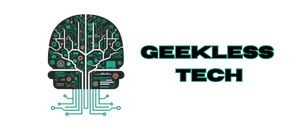Blog

XML vs. JSON
Almost all computer apps that are used nowadays (from desktop to web & mobile) rely on either of these two principal message standards: XML and JSON. Although JSON overtook XML within the last five years, it has now become a format that is used the most widely. If you search online for “XML vs. JSON”, you will see that several articles insisted, JSON is superior to XML because of the simplicity of JSON, and verbosity of XML. Let’s dig into the article to learn about the difference between JSON and XML.
What Is JSON?
JSON (JavaScript object notation) is something that has been derived from a JavaScript programming language. In order to hold the structured data used in JavaScript, JSON was created. Because of its popularity, it is used for all apps. This one is a popular way to send the data for Web APIs.
The first message of JSON was sent in 2001. Since then, people have been using this data format to store & transport data. Like XML, it also receives data from a web server & transmits this to a web page. However, it requires less coding. Besides, its size is smaller, because of which the data transportation process becomes quicker.
Some data types that this format supports are:
Strings: It indicates the characters enclosed in single or double quotation marks.
Number: It might be integer or decimal, positive or negative.
Booleans: This Boolean value might be true or false and is available without quotation marks.
Null: It means nothing without quotation marks.
Along with the available basic data types, this format has arrays & objects.
Arrays:
These are the lists that square brackets represent. The values include commas in between them. These are capable of containing mixed data types. For instance, a single array may come with strings, and Boolean numbers.
For example:
Example 1: [1, 2, 7.8, 5, 9, 10];
Example 2: [“red”, “yellow”, “green”];
Example 3: [8, “hello”, null, true];
After viewing these examples, you can understand that the first example is an array of numbers. The second example is an array of strings, whereas the third one is an array of mixed data types.
Objects:
These refer to the JSON dictionaries enclosed in curly brackets. A colon ‘:’ is used to separate keys and values in objects. Besides, a comma is used to separate pairs. You should know that keys & values are available in any type. But the string is the most common type for the keys.
For example: {“red” : 1, “yellow” : 2, “green” : 3};
Nesting:
It keeps the arrays & objects inside of each other. You need to know that it is possible to put the arrays inside objects, objects inside arrays, arrays inside arrays, and so on. So, it can be said that a JSON file is a large object having plenty of objects & arrays inside.
Example:
{
“song” :
{
“title” : “Hey Dude”;
“artist”: “The Beatles”;
“musicians”: [“John Lennon”, “Paul McCratney”, “Ringo Starr”];
}
}
If you see the previous code, you can see that the song starts with a curly bracket. So, it can be said that the object is a song containing three key-value pairs, and the title, artist & musicians are the keys.
History Of JSON:
These are the important landmarks forming the history of JSON:
- This format was specified by Douglas Crockford in the early 2000s.
- In 2002, the official website was launched.
- Yahoo! began to provide a few of its web services in December 2005 in JSON.
- This format became an ECMA international standard in 2013.
- In the year 2017, the most updated JSON format was published.
Features Of JSON:
Easy to use: JSON API is capable of providing a high-level facade to simplify use cases that are commonly used.
Performance: As this format consumes less memory space, it is quite fast. Therefore, it is perfect to use for large object graphs or systems.
Free tool: You should know that the JSON library is open source, and it can be used for free.
Doesn’t Need To Create Mapping: Jackson API can offer default mapping for multiple objects to be serialized.
Clean JSON: It makes compatible JSON results that are simple to read.
Dependency: JSON library doesn’t require other libraries for processing.
Advantages Of Using JSON:
These are the crucial advantages you get when you use JSON:
- Offers support for each browser
- Simple to read and write.
- Easy-to-read syntax
- Simple to manipulate
- Simple to make
- Use eval() function to natively parse in JavaScript
- Transmit & serialize structured data using a network connection
- All big JavaScript frameworks support it
- Most backend technologies are compatible with it.
- Javascript natively recognizes JSON.
- Use this format with modern programming languages.
- JSON is the text that is possible to be converted to any object of JavaScript into JSON. Then, send the JSON to the server.
Disadvantages Of Using JSON:
These are the disadvantages of using JSON:
- Poor extensibility because of having no namespace support.
- Limited support for development tools.
What Is XML?
The full form of XML is an extensible markup language. It is like HTML, which stands for Hypertext Markup language. HTML helps to create websites, but this markup language is possible to be used for any structured data.
The origin of XML is SGML (Standard Generalized Markup Language) from which XML is originated in a more simple as well as flexible way. In order to facilitate the data’s interchange, XML was designed by turning various systems into universal. XML implemented a specification set when it comes to semantics & custom markup languages to do this. It sets up a clear structure for apps, which ensures data integrity & interchange.
As this one is not capable of performing computation or algorithms, we can’t say it is a programming language. In other words, it doesn’t contain its set of grammar rules & vocabulary with which creating computer programs is possible. It was developed to store, identify & organize the data. In addition, it is beneficial in different systems as it is able to adopt successful HTML features.
XML can handle data in two ways, including Tags and Attributes. The tags work with HTML and begin with the <_>, whereas it ends with the </_>. You should see that the start & end tags are matching. Names should be only numbers, letters, and underscores. Besides, you need to make sure that the tag name starts with a letter only.
For example:
<title> Hello World </title>
If you put the tag inside of another tag, it will create the nested data.
For example:
<color>
<red> 1 </red>
<yellow> 2 </yellow>
<green> 3 </green>
</color>
The colour tag that is available in this code contains three more tags, including— red, yellow, and green.
History Of XML:
These are the key landmarks from its history:
- It was derived from SGML.
- Its version 1.0 was released in February 1998.
- Jan 2001: The standard: XML Media Types was proposed by IETF.
- 1970: GML was invented by Charles Goldfarb, Ed Mosher, and Ray Lorie.
- Its development began in 1996 at Sun Microsystem.
Features Of XML:
- Its tags aren’t predefined. So, it is necessary to define your customized tags.
- The design of XML was done to carry data instead of allowing you to display that data.
- Its markup code is simple to understand for a human.
- The structured format is simple to read & write from programs.
- Like HTML, it is also an extensible markup language.
Advantages Of Using XML:
These are the advantages of using XML:
- It can make the documents transportable across systems & applications.
- Users are able to exchange data between various platforms using this markup language.
- It helps to separate the data from HTML.
- Besides, this one helps to simplify the platform change process.
- This extensive markup language allows the creation of user-defined tags.
Disadvantages Of Using XML:
The disadvantages of using XML are as follows:
- A processing application is needed.
- Its syntax is similar to other alternative ‘text-based’ data transmission formats. Therefore, sometimes it can be confusing.
- Intrinsic data type support is not available.
- The syntax of this extensive markup language is redundant.
After knowing the features, advantages, and drawbacks of JSON and XML, you may need to know about XML vs. JSON in depth. Before discussing the differences between these two, we are going to mention what are the similarities between JSON And XML. Let’s check it.
What Are The Similarities Between JSON And XML?
Both of them are data serialization formats. These let you exchange data across various platforms, applications, or systems in a standardized manner.
There are various platforms & programming languages that are capable of representing the same data differently. For instance, a data object is used by a Java application. Whereas a Python application stores information about the same real-world entity using a dictionary.
You should perform these steps in order to exchange data between them.
- You need to convert Java objects to JSON or XML.
- It is important to transmit JSON or XML files over a network.
- You have to reconvert JSON or XML to a Python dictionary.
Self-describing: As JSON And XML — both of these are self-describing, both are human-readable texts.
Hierarchical: Both of these formats support hierarchical structure. In this case, the term hierarchical indicates the values within values.
Data Interchange Format: Multiple different programming languages use these two formats as data interchange formats.
Parse: Both of these are possible to be parsed.
Retrieve: Both of these formats are possible to be retrieved by using HTTP requests. GET, PUT, & POST are a few ways that are used to retrieve the data.
Data Representation— XML vs. JSON:
Data is represented in a tree pattern by XML, whereas JSON uses key-value pairs. Here, we are going to mention some examples that will display the same information in both data representations.
Example Of JSON document:
Hence, you can see the names of three guests in JSON.
{“guests”:[
{ “firstName”:”John”, “lastName”:”Doe” },
{ “firstName”:”María”, “lastName”:”García” },
{ “firstName”:”Nikki”, “lastName”:”Wolf” }
]}
Example Of XML Document:
In this example, you can see the names of three guests in XML.
<guests>
<guest>
<firstName>John</firstName> <lastName>Doe</lastName>
</guest>
<guest>
<firstName>María</firstName> <lastName>García</lastName>
</guest>
<guest>
<firstName>Nikki</firstName> <lastName>Wolf</lastName>
</guest>
</guests>
Key Differences— XML vs. JSON:
Although both of these two formats serve similar purposes, there are a few core differences that set them apart. You need to understand these differences to decide which is more helpful for your use case.
Way Of Representing Structured Data:
Both of these are well-known ways of storing structured data in a file or database. JSON can be considered as a lightweight and human-readable way to represent data structures. But XML code is a lengthier process of representing structured data.
Format:
In order to generate a maplike structure, JSON uses key-value pairs. The key is a string that identifies the pair. And, the value represents the information that you provide to that key. Suppose you might have “NumberProperty”: 10. Hence, the key is “NumberProperty” whereas the value is 10.
Whereas, XML, which is a markup language, is actually a subset of SGML with a similar structure to HTML. In XML, data remains stored in a tree structure, presenting a lot of information that you are capable of following as well as reading. The parent element is the root of the tree, and the tree starts with the root element, before you get information about child elements. This structure helps to load in plenty of variables & dynamic configurations.
Syntax:
The syntax, which is used in JSON, is more compact. And it is simpler to write & read. This one lets you define objects easily.
XML substitutes certain characters for entity references. For instance, the markup language uses the entity reference ⁢ rather than the < character. This markup language uses end tags, making this longer than JSON.
Parsing:
You need to parse XML with an XML parser. It can slow & complicate the method.
A more accessible standard Javascript function parses JSON. The user is able to parse JSON faster than XML due to their syntax & file size differences.
Schema Documentation:
Schema documentation is capable of describing a file’s purpose. It shows you for which purpose you need to use this.
When it comes to XML documents, you can see a link to their schema in the header. The schema, which is available in XML format, lets you read what you need to expect to find in the file. After that, you should validate the document against the schema. Then, you need to check that all have loaded properly without errors.
JSON lets you use schemas. However, these allow greater flexibility and are simpler.
Reason Of Famous:
In order to store and transmit data, JSON format should be used. Whereas you can use XML to represent data in a machine-readable way. JSON has been continuously gaining fame as a storage medium for web applications, and the reason is simplicity. In contrast, XML is a go-to choice to transmit structured data over the web.
Data Type Support:
JSON is capable of supporting only a few data types, including strings, numbers, and objects. Moreover, it can support Boolean arrays. But for XML, it can not be done until you add any extra tag.
Compared to JSON, XML is more flexible. Besides, it is compatible with timestamps, binary data and other complex data types.
Ease Of Use:
As XML is a markup language, it needs a tag structure and is more complex.
Compared to this, JSON is a type of data format that extends from JavaScript. Tags aren’t used in this case. Therefore, it becomes simpler to read for humans. JSON is able to represent the same data in a smaller file size to transfer data quickly.
Security:
JSON parsing is safer compared to XML.
XML’s structure is vulnerable to unauthorized modifications. It can generate XXE or a security risk. Besides, this one is vulnerable to unstructured external DTD or document-type declaration. In order to prevent both of these issues, you need to turn the DTD feature off in transmission.
Cross Platform Compatibility:
JSON can be used in web or mobile apps without needing to worry about compatibility problems. The reason is that it is accepted widely on the web & mobile apps. On the flip side, XML faces a few problems regarding cross-platform compatibility. Several programming languages (except Actionscript) don’t support it. So, if you are a developer, you should use a tool like Apache HttpComponents or Apache axis2 whether you are willing to run your apps on many platforms simultaneously.
Storage:
XML files need more storage space compared to JSON files. But it’s not going to be an issue if your web server has plenty of RAM to store files. However, you are able to change the architecture of your app to allow all processing to happen on the client side rather than doing it in the background, where it would consume too much memory space.
Structure:
A major difference between these two formats is that compared to JSON, XML comes with a more rigid structure. Therefore, it becomes more difficult to manipulate without breaking the document. Additionally, you are unable to edit most XML files in a place like you can do with JSON documents. So, whether you are willing to change the value of an element in a JSON document, then it is important to edit the value directly in the text editor. It indicates that a malicious user might be able to change element value when they edit the document, and the result can be seen in the output of your program.
When To Use— XML vs. JSON:
XML is a better option when you are willing to store multiple different data types with multiple variables. It can check for errors in complex data more efficiently compared to JSON. The reason is that XML especially wants to store data in such a way that it becomes machine readable. This one includes a set of tools & libraries which are more mature. It can deliver improved performance than legacy systems.
On the flip side, the reason behind the design of JSON format was data interchange. It offers a more concise format. Besides, it lets you improve communication speed and performance.
JSON will be a better option for mobile apps, APIs and data storage. Whereas XML is mainly perfect for complex document structures that need data exchange.
XML vs. JSON: which one is better?
So, which can give you better performance— XML or JSON?
When it comes to JSON, you would say that it is easier to read & write. Besides, it can support arrays and is faster to parse. On the flip side, the markup language XML supports comments. And it also carries metadata that can help you in document markups or metadata applications. Remember that your preference relies on your specific requirements.
It is not so easy to answer the question: “XML vs. JSON: which one is better?” The markup language XML had a golden age upon its creation. XML contributed to data interchange in a universal language, which transformed the world of computation.
Despite being considered “antique,” XML comes with some admirable features that may go beyond fast processing & data transportation. And, it is more complex than JSON.
Comparision:
So, it could be stated that XML vs. JSON isn’t a fair comparison. But these two can be compared when both of these technologies are considered according to their purpose based on the developer’s goals. Hence, the faster one is JSON, which is simpler to use. Besides, there is another factor based on which you can compare these two, considering the features each technology includes. Although the markup language XML is more complex, it can offer extra features. So, we can say that JSON hasn’t been developed yet.
Technology will never stop evolving. We know that JavaScript is already a popular programming language. Therefore, JSON has also begun to gain attention increasingly. Once JSON was easier to use, it did not take long until developers began to use it. Overall, it can deliver awesome performance.
JSON is the most effective option to perform data exchanges, which don’t need multiple concerns regarding validation and syntax. However, its existence doesn’t discard the importance of learning the markup language XML since its features might go beyond quick data transportation & processing.
The Bottom Line:
It can be seen that XML and JSON differ in different aspects like applicability, coding representation, data structure, & security. When we weigh XML and JSON in the same balance, it can be concluded that to fulfil data structuring & exchanging mechanisms, JSON is the simplest way. Hence, we can say that the performance of JSON surpasses XML. However, the markup language XML plays an important role in data storage, and developers still use its document formats and set it as default in multiple tools.
Frequently Asked Questions
What is the key difference between XML and JSON?
Syntax and structure mainly differentiate these two formats. JSON uses key-value pairs and makes it easier to read. On the other hand, XML makes this a bit more complex by using end tags.
Why is XML being replaced by JSON?
For data Interchange, JSON has become the most preferred format in multiple areas, and the reason is its compatibility with JavaScript, overall speed & efficiency. As it is also lightweight and can handle data quickly, it is an attractive substitute.
Is XML still being used?
People still use this markup language in multiple circumstances where its benefits come to the forefront. It is true in environments or applications where document markup is crucial or where you have to work with XHTML or SVG.




